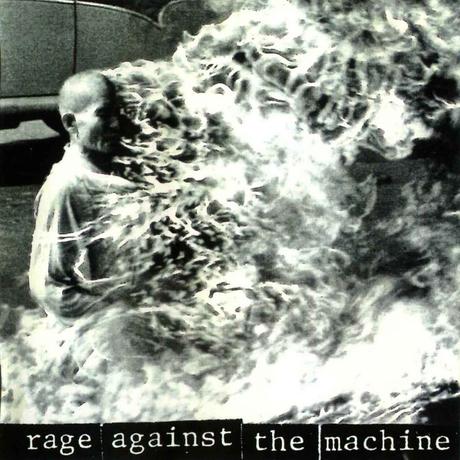
The old saying goes, “If you’re not outraged, you’re not paying attention.” Back in 1991, Rage Against the Machine was certainly paying attention: systemic oppression, corporate domination, complacency, imperialism — even Eurocentric public education. With their self-titled debut album, Rage lashed out at all that was wrong with American culture in the 90’s. Come to think of it: all that was wrong in the following decade, and in this one. After 25 years, the album is wiser and more relevant than ever before. It’s almost too perfect that its 25th anniversary has arrived amidst one of the strangest elections in US history. An election that highlights how all of these plagues haven’t gotten better — they’ve gotten worse. There has, I think, never been a better time to put on Rage Against the Machine.
Why We Love It
Musically, the album presents a hammering combination of rap and metal — “rap rock” and “funk metal” are terms commonly used to describe the band’s unique sound. Rage took cues from earlier groups like The Beastie Boys, but their debut feels fresh and original, even today. Rage featured Tim Commerford on bass, Brad Wilk on drums, Tom Morello on guitar and Zack de la Roch as both lyricist and vocalist. Morello (a Harlem-born graduate of Harvard University) is still revered for his guitar work with Rage, which featured heavy feedback and distortion. The band’s other co-founder, de la Rocha, was born to front a band like Rage. His father, a Mexican-American muralist, and his mother, who earned her PhD in Anthropology, divorced early, and his grandfather fought in the Mexican Revolution. Don’t mistake the music for brute machismo — these were highly intelligent musicians backed by a wellspring of political awareness.
It’s hard to talk about highlights in an album that’s so excellent throughout. Commercially, the album’s biggest hit was “Killing in the Name”. The song’s lyrics rail against submission, and the hidden, racialized agendas of law enforcement. The music is schizophrenic hard rock that culminates in a giant middle finger: “Fuck you, I won’t do what you tell me!” repeats sixteen times. “Bullet in the Head” and “Fistful of Steel” feature some of the album’s best bass guitar. “Take the Power Back” is a call to action with perhaps the album’s most nuanced lyrics: “I’m inferior? Who’s inferior?/ Yeah we need to check the interior / Of the system that cares about only one culture.” The vocals on “Wake Up” pay volcanic tribute to Malcolm X and MLK. Before the ending of the album’s final song, “Freedom”, de la Rocha lowers his voice almost to a whisper and says, “Anger is a gift.” In Rage’s case, it certainly is.
David Harris once said, “It’s a sad and stupid thing to have to proclaim yourself a revolutionary just to be a decent man.” Here, Harris captures the crux of Rage Against the Machine – theirs is not anger for anger’s sake, or a mindless mosh pit. Rage’s debut is about raising awareness, waking people up and urging them to observe, if not break, the dangers of the status quo. It’s about rescuing human decency from a broken system. Every band has a shtick, a niche, a charade they rely on for ticket sales. But what is perhaps so loveable, and so resonant, about Rage is their sincerity. The fact that their disillusionment isn’t watered down with irony. The fact that their personal lives reflect the same strident activism found in their music. In a 1999 interview with Rolling Stone, de la Rocha reflected, “I think every revolutionary act is an act of love. Every song that I’ve written, it is because of my desire to use music as a way to empower and re-humanize people… Every song that I’ve ever written is a love song.” Pretty unexpected from a band once skewered as “anti-family” and “pro-terror.”
What They’re Doing Now
After their debut album, the band went on to release three more albums, Evil Empire (1996), The Battle of Low Angeles (1999), and the cover album, Renegades (2000). From the get-go, Rage enjoyed both critical and commercial success. They’ve sold more than 16 million records to date, and their place in the hard rock canon is inarguable. Rage was also a huge influence on what would become the nu metal movement of the late 90’s: Limp Bizkit, Korn, Godsmack, etc. — but we won’t hold that against them. Rage Against the Machine formally disbanded in 2000. Zach de la Rocha went one way, and the remaining members went on to help form Audioslave. Audioslave broke up in 2007, and from 2007 to 2011, Rage reunited for a series of live shows. Since then, the band members have gone on to pursue their own interests – music projects, activism, or in the case of drummer, Brad Wilk, his own brand of diabetic-friendly lemonade.

